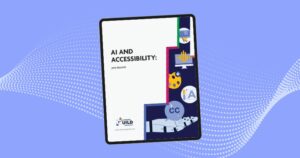Your cart is currently empty!

Nuts and Bolts: Social Media for Learning

Latelyin the industry there’s been a lot of tangling of terms, most of them includingthe word “social”: social media, social learning, social technologies, social platforms,social socials… We’ve attempted to address this at length in the neweLearning Guild Report, Social Media forLearning, released last week and available here.
This month’s column is an excerpt fromthe Report; join me this Friday for an overview of the findings (including somesurprises) at the closing session of this week’s eLearning Guild Online Forum on Social and Informal Learning.
Social Learning vs. Social Media for Learning
It’s important to distinguish between sociallearning and social media for learning.
Social learning is not new: hot stoves and the like notwithstanding(learning from sad experience and failure), it’s howwe’ve always learned, all the time. It’s how we learn our native language, howwe learn to get along in school, how we learn about, and function in, theculture of a new workplace. We watch other people, we talk with other people,we read instructions other people have written, and we ask each other thingslike, “Hey Joe! Can you please show me how to run this spreadsheet?”
New social media tools now enable social learning to happen on a much largerscale. But this doesn’t mean that social learning is something we suddenly needto “do,” as if it hadn’t existed before or that we need to attempt to“implement.” Rather, those involved in eLearning should work to ensure ourdesigns home in on and support areas where social learning is already naturallyoccurring in the learner’s workflow and leverage new tools where that makessense. (Workflow questions: Where and when are workers asking for help from oneanother? Where do they need performance support?)
In the industry right now – as we seein the Social Media for Learning reportresearch data – there is considerable use of social media tools in instructiondelivery efforts. But there’s less evidence that people are using the tools tosupport social learning. Often, people use social media tools as another meansof delivering content. For example:
- Publishing the training departmentnewsletter on a blog
- uto-scheduling tweets about classassignments from a Twitter account that does not otherwise engage with thelearners or ask them to engage with each other
- Hosting a software application developmentcourse, in tutorial format, on a wiki
By contrast, using social media tosupport and extend social learning invites learners to contribute, engage, andparticipate with one another online. For instance, when:
- Setting up a wiki for those in a new-hireinduction program to work together to edit a FAQs page for use by the nextgroup coming to the program
- Having managers-in-training use amicroblogging tool for a leadership book-club discussion
- Helping to support and participating in acommunity of the organization’s customer service reps, to give them a place toshare war stories and strategies for dealing with challenges
So just using the online tools todeliver content doesn’t support “social learning;” that happens when you usethe tools to invite interaction from and between the learners. It’s aboutsocial, not media, and it’s about shared learning, not just pushing content.
Morepartnership, less delivery
While we are seeing some use of social media for learning toreplicate traditional approaches to instruction, it’s clear from the surveydata that those involved in learning endeavors are missing opportunities forinformal learning and performance support. These things are happening anyway,and in some cases other work areas are supporting them.
The marketingdepartment offers discussion forums for new product rollouts. The communicationsoffice handles interpretation of policy and new procedures. Where is thetraining department in this picture?
Learningpractitioners are well advised to start paying more attention to learning as itreally happens – all day, as we interact with one another, as we go about thebusiness of executing our job tasks or schoolwork. Where do workers struggle?How much time do they spend looking for something, or someone? Where ismentoring happening? How about job shadowing? Are the organization’s workersturning for help from LinkedIn groups or Facebook communities? Where can we aslearning professionals become part of the daily workflow rather than a separateentity offering formal scheduled events? How can we be partners in sharedlearning, rather than an outside entity only delivering it?
View the complete eLearning GuildReport, Social Media for Learning.
And be sure to join me for the GuildOnline Forum on Social and Informal Learning.
Want More?
See my“Truth About Social Learning” resources (literature, references, etc.) at https://www.delicious.com/jbo27712/SocLrnTruth.
And joinme at DevLearn 2011 for “What Managers and Executives Need to Know about SocialLearning” and more!







